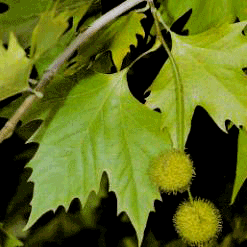
Elevational changes in a neotropical Fig (Ficus spp.) community in North Western Ecuador
iForest - Biogeosciences and Forestry, Volume 1, Issue 2, Pages 104-106 (2008)
doi: https://doi.org/10.3832/ifor0462-0010104
Published: May 20, 2008 - Copyright © 2008 SISEF
Short Communications
Abstract
Differences in primary production levels at high elevations sites have a direct impact on the numbers, and types, of fauna that areas of tropical forest can support. We investigated the effects of increasing elevation on a Neotropical fig (Ficus spp.) community in the Andean Choco region of Ecuador. Results show that there is a significant reduction in mean density of fig trees (p = 0.01), likewise mean basal area decreases with increasing elevation (p < 0.05). Causes are suggested and the possible consequences of this on frugivores is discussed.
Keywords
Choco, Cloud Forest, DBH, Frugivore, Los Cedros Biological Reserve
Authors’ Info
Paper Info
Citation
Shanee S, Peck MR (2008). Elevational changes in a neotropical Fig (Ficus spp.) community in North Western Ecuador. iForest 1: 104-106. - doi: 10.3832/ifor0462-0010104
Paper history
Received: Aug 09, 2007
Accepted: Mar 05, 2008
First online: May 20, 2008
Publication Date: May 20, 2008
Publication Time: 2.53 months
Copyright Information
© SISEF - The Italian Society of Silviculture and Forest Ecology 2008
Open Access
This article is distributed under the terms of the Creative Commons Attribution-Non Commercial 4.0 International (https://creativecommons.org/licenses/by-nc/4.0/), which permits unrestricted use, distribution, and reproduction in any medium, provided you give appropriate credit to the original author(s) and the source, provide a link to the Creative Commons license, and indicate if changes were made.
Web Metrics
Breakdown by View Type
Article Usage
Total Article Views: 45656
(from publication date up to now)
Breakdown by View Type
HTML Page Views: 38570
Abstract Page Views: 2830
PDF Downloads: 3343
Citation/Reference Downloads: 176
XML Downloads: 737
Web Metrics
Days since publication: 6418
Overall contacts: 45656
Avg. contacts per week: 49.80
Citation Metrics
Article Citations
Article citations are based on data periodically collected from the Clarivate Web of Science web site
(last update: Mar 2025)
Total number of cites (since 2008): 8
Average cites per year: 0.44
Publication Metrics
by Dimensions ©
Articles citing this article
List of the papers citing this article based on CrossRef Cited-by.
References
Habitat quality and populations of two sympatric gibbons (Hylobatidae) On a mountain in Malaya. Folia Primatologica 33: 291-309.
Gscholar
Fruiting and frugivores at a strangler fig in the tropical rain forest of Los Tuxtlas, Mexico. Journal of Tropical Ecology 2: 349-357.
Gscholar
Mesoscale gradients of herb richness and abundance in Central Amazonia. Biotropica. Early edition published online 15 August 2006.
Gscholar
Some ecological, distributional and group behavioural features of Atelinae in southern Peru: with comments on Interspecific relations. In: Socioecology and psychology of Primates (Tuttle RT ed). Mouton & Co., The Netherlands, pp.87-102.
Gscholar
A field guide to the families and genera of woody plants of northwest south america: Columbia, Ecuador, Peru. University of Chicago Press. Chicago, USA.
Gscholar
What factors affect the size of chimpanzee parties in the Kalinzu forest, Uganda: examinations of fruit abundance and number of oestrous females. International Journal of Primatology 22: 947-959.
Gscholar
How fruit abundance affects the chimpanzee party size: a comparison between four sites. Primates 44: 77-81.
Gscholar
Forest Environments in Tropical Life Zones: A Pilot Study. Pergamon. Oxford.
Gscholar
Altitudinal changes of forestry diversity and composition in the Ramal de Guaramacal in the Venuzuelan Andes. Ecotropicos 15: 160-176.
Gscholar
Phenological Patterns of Ficus in Relation to Other Forest Trees in Southern India. Journal of Tropical Ecology 13: 681-695.
Gscholar
Fig-eating by vertebrate frugivores: a global review. Biological Reviews 76: 529-572.
Gscholar
A comparison of the structure and composition of montane and lowland tropical forest in the serranía Pilón Lajas, Beni, Bolivia. In: Forest Biodiversity in North, Central and South America, and the Caribbean. (Dallmeier F, Comiskey JA eds). Man and the Biosphere Series 21: 681-700. UNESCO, Paris.
Gscholar
Present status of the brown-headed spider monkey (<i>Ateles fusciceps</i> Gray, 1866 - Primates: Atelidae) in Ecuador. Lyonia 6: 17-24.
Gscholar

















